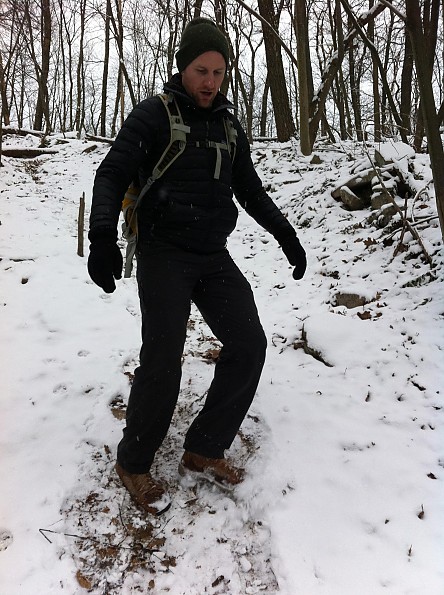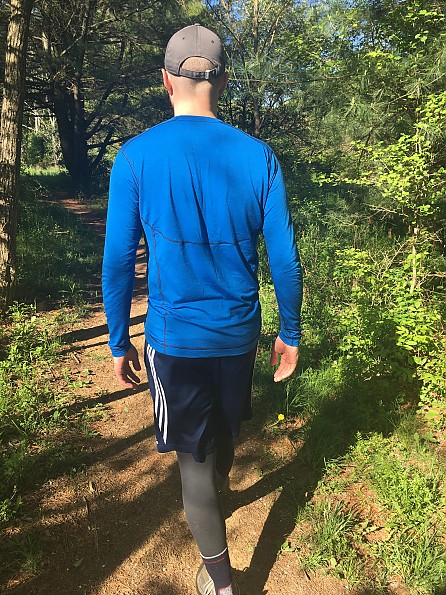Outdoor Research Alpine Onset Crew
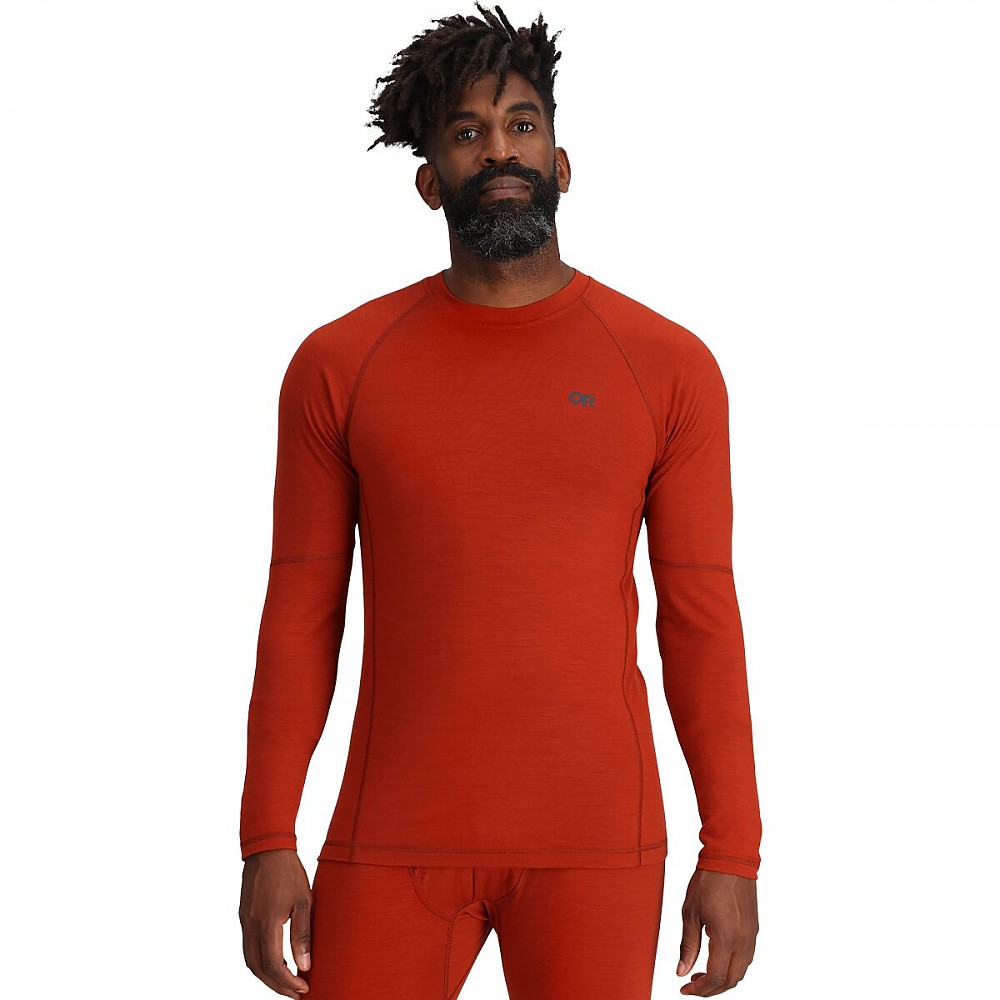
The Outdoor Research Alpine Onset Crew is a comfortable baselayer that blends merino wool with nylon and spandex to form a highly flexible, non-restrictive baselayer. It's best used for active pursuits in moderately cold temps, like hiking in chilly weather.
Pros
- Soft
- Ample arm length
- Agile and non-restrictive
- Controls odors
- Very comfortable to sleep in
- OR's Infinite Guarantee for lifetime of the product
Cons
- Neck stretches after use
- Seams are beginning to show signs of wear
Conditions and Temperatures:
I tested the Alpine Onset Crew baselayer top along with its bottom counterpart, the OR Alpine Onset Bottoms. These items are a part of Outdoor Research's Alpine Onset collection, which includes an array of men's and women's layers.
As soon as the OR Alpine Onset Crew top arrived on my doorstep in the dead of winter, I put the baselayer on and have worn it pretty consistently since. I wore it every week for about three months, multiple days per week at times, and then sporadically as the temperatures rose for an additional two months.
I’ve worn this crew top baselayer for three months through the fields and forests of central Pennsylvania while hiking, camping, hunting, mountain biking, and for general everyday purposes (and even under a dress shirt one day at work when it was super cold outside). Temps have ranged from -18°F to 60°F (-28°C to 15.5°C), but based on my experiences, the top is best suited as a baselayer for moderately cold temps like 20°F to 40°F (-7°C to 4°C).
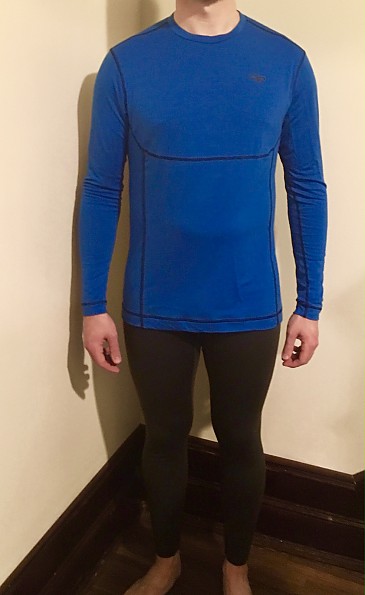
Tester Measurements:
- 6' 2" (1.88m)
- 200 lbs (90.7kg)
- 16" neck
- 34" sleeve length
- 42" chest
- Tested a size Large
Fit and Comfort:
OR has labeled the Alpine Onset Crew top as a trim fit, but don't get that confused with a slim fit. I feel it more closely resembles somewhere in between trim and regular fit, but this is subjective based on one’s body size and shape. I really like the way it fits, as it is semi-tight, like a baselayer should be, but not restrictive or too tight. Its slightly loose form makes for a comfortable layer that can be worn all day without the restrictive feeling that often comes with some wetsuit-tight baselayers.
Due to my long arms, I often struggle finding tops with sleeves that actually reach my wrists. This baselayer has very generous sleeve lengths, which I especially appreciate. In the winter, this means no gaps between gloves and sleeves. Hooray!
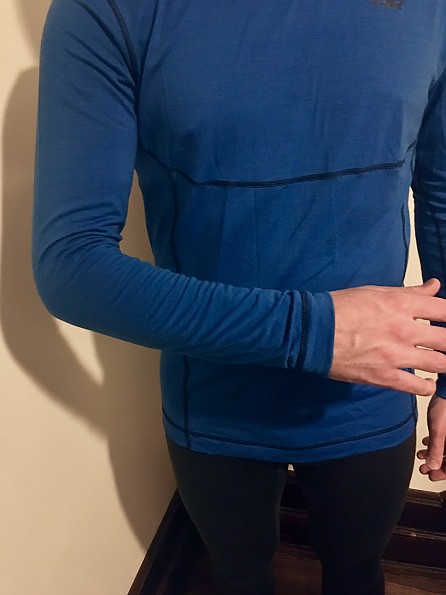
Weight: 7.3oz (207g)
Layering:
I’ve lost track of all the different combinations of layers I’ve worn with the OR Alpine Onset Crew top and have had no issues to date with any of those combinations. Layerability is easy-peazy! In addition to being a baselayer, I've also worn it as an outer layer in warmer temps.
Although unseen, the OR Alpine Onset Crew is under a few layers, keeping me warm during a snowy dayhike.
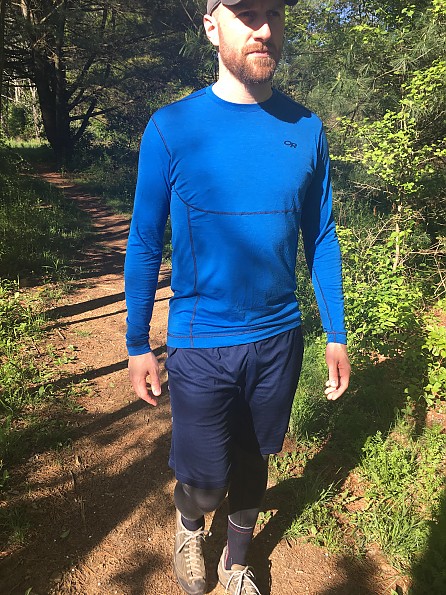
Worn here as an outer layer during a spring morning stroll.
Materials:
I've always had good luck with merino wool, but never tried a merino blended product (other than socks) quite like this one. With 83 percent merino wool, 12 percent nylon, and 5 percent spandex, the added stretch and comfort is definitely noticeable. This combination of materials makes for a super soft, highly flexible baselayer, without compromising the need for odor control or warmth. Although not made for the really cold temps, I think OR has found the right balance of materials with the Alpine Onset collection for cool to moderately cold temperatures.
Caring for the garment is easy. No special detergents required and unlike some wool products, this can be machine dried at a low setting. For testing purposes, I both machine dried this garment and line dried it. When line dried, it takes less time than a full wool baselayer. This is likely due to it being lightweight and the small percentages of nylon and spandex.
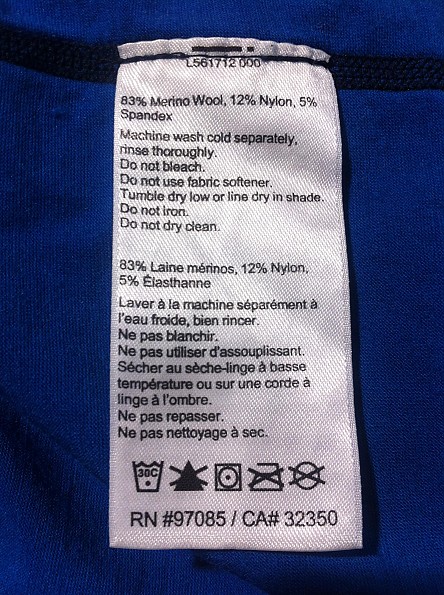
Construction and Durability:
Perhaps it is because I’ve never seen such seams before, but the first aspect of this baselayer that I noticed was the flat seam that runs just under the chest and shoulder blades. I’m not entirely sure what benefit, if any, this seam provides, but I noticed no real difference in terms of comfort or use in the placement of this seam.
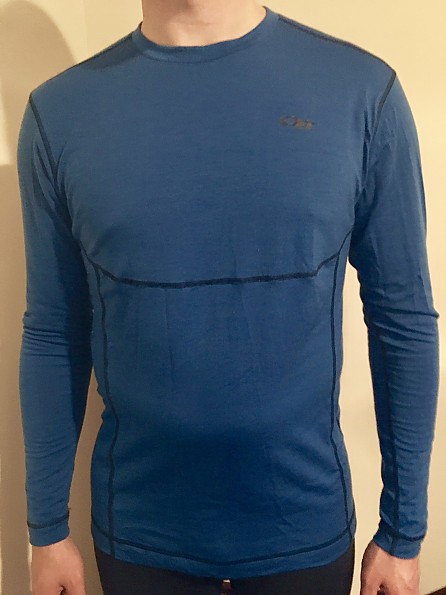
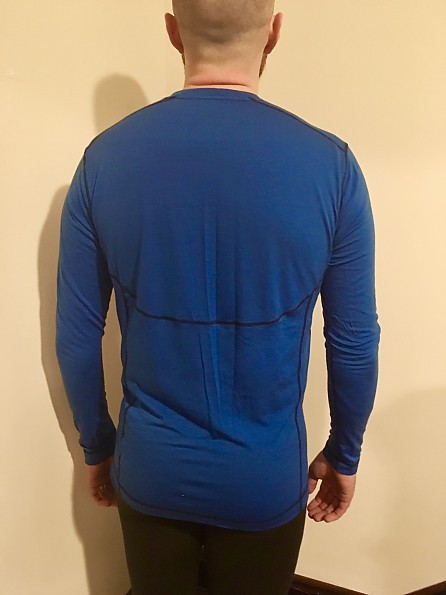
Sort of a strange placement of a seam (under the chest and shoulder blades), but it did not impact the wear for better nor worse.
At the onset of use, all seams appeared in great shape, but around the third month of regular use, along with adhering to the provided care instructions, a couple of the seams began to show signs of wear and to unravel.
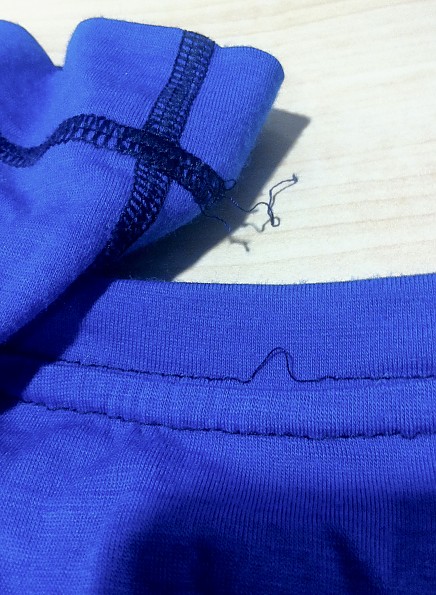
A couple areas where the stitching has come undone.
Additionally, the neck seems to have stretched out a little bit since its initial use. If I’m not careful with layering or adding a Buff/balaclava, this can create an unwanted draft on the neck.
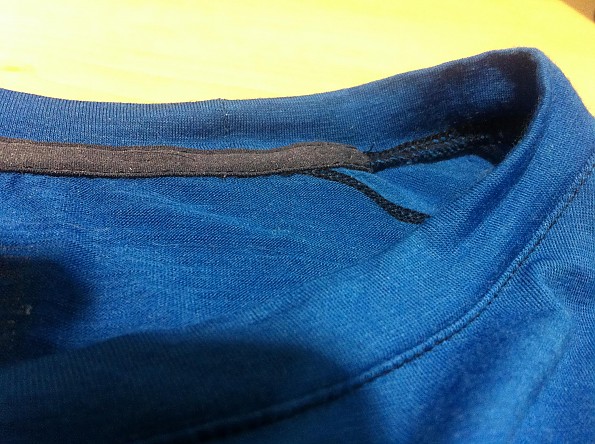
Although the neck has stretched out a little bit, notice the small strip of soft fabric over stitching on the back of the neck. This prevents any possible irritation from the seams.
Performance (retaining heat but not moisture):
In my opinion, any good baselayer has to strike the balance between retaining heat but not retaining moisture, preferably in a comfortable manner. During various activities (most commonly hiking, but also while hunting and mountain biking), I’ve learned that this baselayer has that balance pretty well figured out. Only once or twice, when I either miscalculated the terrain (i.e. steeper and more strenuous than I expected) or mislayered (i.e. wore too many layers for the external temps), did I experience excessive sweating and overheating. Otherwise, in more normal circumstances, the Alpine Onset Crew top breathed well and did not retain excessive moisture.
I also wore the crew top while doing more sedentary things like still hunting and well, sitting on my couch, and it didn’t provide a great deal of warmth. The crew top baselayer shines best when put to the test and worn during active pursuits.
Temp/Season Range:
While mostly worn during the snowy winter months, I also tested this through the springtime until the temps became too hot to comfortably wear this top. While I do sometimes wear a very lightweight long sleeve top during the humid summer to keep the sun off my skin, this is not a layer I would choose. It becomes too warm for the hot and humid weather.
Because seasons vary widely, I'll reiterate the temp range I wore it in: 18°F to 60°F (-28°C to 15.5°C), but based on my experiences, it is best suited as a baselayer at 20°F to 40°F (-7°C to 4°C) when actively moving.
As a Sleeping Layer:
I found in the springtime that this is a really great top to sleep in when curled up in a tent and sleeping bag. I tend to get toasty in the tent, so a lightweight, soft-on-the-skin top like this was really pleasant and I didn't overheat.
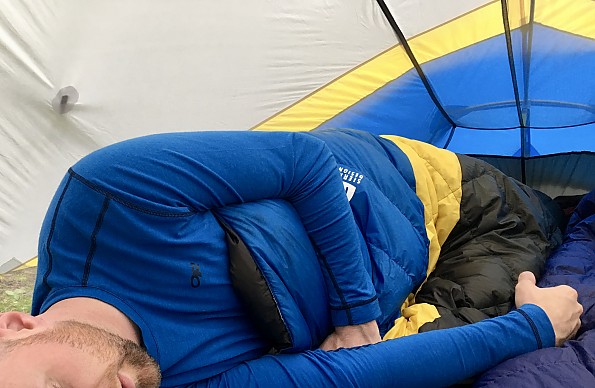
Recommendation:
I recommend the Outdoor Research Alpine Onset Crew top to those who are looking for a comfortable and agile baselayer to be used during chilly to moderately cold, active pursuits.
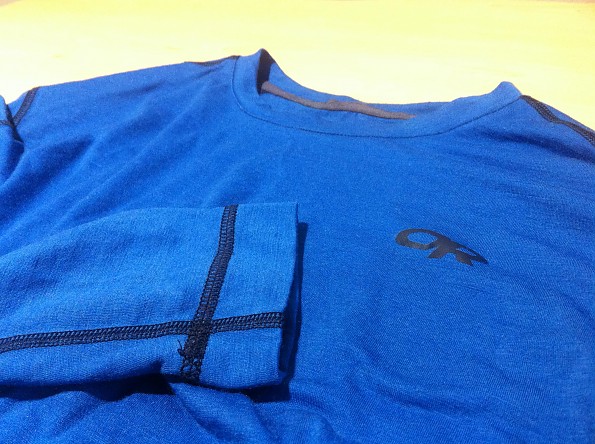
Background
During the winters of the Mid-Atlantic (USA), I regularly wear some sort of baselayer when winter hiking and hunting. During really cold snaps, I even wear a baselayer around the house and to the office. I also tend to wear a lighter baselayer in the fall and springtime.
Your Review
Where to Buy
You May Like
Specs
| Price |
Current Retail: $49.48 Historic Range: $39.58-$99.00 |
| Weight |
8.1 oz / 230 g avg weight for size L |
| Center Back Length |
29 in / 74 cm |
| Fabric |
83% merino wool, 12% nylon, 5% spandex |


